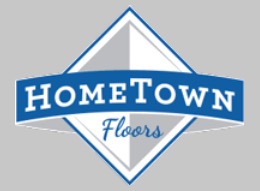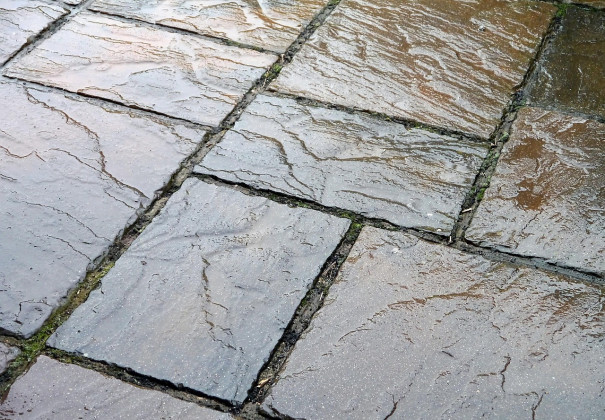Ultimate Grout Color Guide: Transform Your Tile Project with Smart Design Choices
When it comes to tile work, grout color is often overlooked, yet it can be a game-changer for your design project. The right grout can elevate the beauty of your tiles, enhancing their colors and patterns while ensuring a cohesive look. Whether you’re aiming for a bold statement or a subtle backdrop, understanding grout options is essential in achieving your desired aesthetic. This Ultimate Grout Color Guide will navigate you through the myriad of choices available, providing insights on how different shades can influence the overall feel of your space. From classic white to dramatic dark hues, the right grout can transform ordinary tiles into extraordinary focal points. Discover how to make smart design choices that not only highlight your tiles but also reflect your personal style. Dive in and unlock the secrets to a stunning tile project that speaks to your vision and creativity! <
Importance of Grout Color in Tile Design
Grout color plays a pivotal role in tile design, often serving as the unsung hero that ties the entire project together.

The choice of grout can dramatically impact the visual appeal of your tiles, making them either stand out or blend seamlessly. For instance, a contrasting grout can create a striking border around each tile, highlighting their shape and pattern. Conversely, a matching grout can result in a smooth, uninterrupted surface that emphasizes the overall design rather than individual tiles. This subtle yet powerful design element can transform a room, adding depth and character. <
Moreover, grout color influences the perception of space. Light-colored grout can make a space appear larger and more open, perfect for smaller rooms or areas with limited natural light. On the other hand, dark grout can add a sense of intimacy and coziness, ideal for larger spaces or areas where you want to create a dramatic effect. The strategic use of grout color can thus manipulate spatial dynamics, helping achieve the desired ambiance.

Whether it’s a kitchen backsplash or a bathroom floor, the grout color choice can either enhance or detract from the design, making it crucial to consider. <
In addition to aesthetic considerations, grout color impacts the practicality and maintenance of the tile project. Lighter grout colors, while visually appealing, can show stains and dirt more easily, necessitating frequent cleaning. Darker grout colors, although better at camouflaging dirt, may require precise application to avoid looking messy or uneven. Understanding how grout color interacts with daily use and maintenance will help you make informed decisions that balance beauty and functionality. Ultimately, the importance of grout color in tile design cannot be overstated, as it serves both decorative and practical purposes. <
Understanding Grout Types and Their Impact on Color
Grout is not just a single entity; it comes in various types, each with distinct characteristics that influence its color and performance.

The most common types of grout include cement-based, epoxy, and urethane. Cement-based grout, the traditional choice, is versatile and available in a wide range of colors. However, its porous nature means it can absorb stains, which can alter its appearance over time. Sealing cement-based grout can mitigate this issue, preserving the intended color and enhancing durability. <
Epoxy grout is known for its superior stain resistance and durability. Made from epoxy resins and fillers, it is less porous than cement-based grout, making it ideal for areas prone to moisture and heavy use, such as kitchens and bathrooms. Epoxy grout maintains its color better over time and requires minimal maintenance. However, its application can be more challenging and costly. Despite the higher initial investment, many homeowners find the long-term benefits of epoxy grout to be worth it, especially in high-traffic areas. <
Urethane grout offers a blend of ease of application and durability.

It is flexible, resistant to cracking, and available in a variety of colors. Unlike cement-based grout, urethane grout does not require sealing, simplifying maintenance. Its flexibility makes it suitable for areas subjected to movement, such as floors. When choosing grout type, consider the specific needs of your project, as each type has unique advantages that can affect the final color and durability of the grout. Understanding these differences will help you select the most suitable grout for your tiles, ensuring both aesthetic and functional satisfaction. <
Factors to Consider When Choosing Grout Color
Choosing the right grout color involves several factors beyond personal preference. One critical aspect is the tile color and pattern. For tiles with intricate designs or multiple colors, a neutral grout can prevent the overall look from becoming too busy. Conversely, bold tiles can benefit from contrasting grout that accentuates their design.

For monochromatic or solid-colored tiles, matching grout can create a seamless appearance, while contrasting grout can add visual interest. <
Lighting conditions in the space also play a significant role in grout color selection. Natural light can highlight grout colors differently than artificial light, affecting the room’s overall feel. In well-lit areas, darker grout can create a striking contrast without overwhelming the space. In dimmer areas, lighter grout can help brighten the room and make it appear larger. Consider the lighting conditions when choosing grout color to ensure it complements your tiles and enhances the space effectively. <
Another important factor is the room’s overall color scheme and design style. For minimalist or contemporary designs, subtle grout colors that blend with the tiles can maintain the clean lines and simplicity of the space. In eclectic or traditional styles, contrasting grout can add a layer of detail and complexity that enriches the design.
Additionally, practical considerations such as maintenance and durability should not be overlooked. High-traffic areas may benefit from darker grout that hides dirt and stains, while lighter grout can be ideal for spaces where cleanliness is easily maintained. By weighing these factors, you can choose a grout color that not only enhances your tiles but also aligns with your design goals and lifestyle needs. <
Conclusion
In conclusion, grout color is a vital element in tile design that significantly impacts the visual and functional aspects of your project. By understanding the importance of grout color, the different types of grout available, and the factors to consider when making your choice, you can make informed decisions that elevate your tile work. Whether you opt for a subtle, matching grout or a bold, contrasting one, the right choice can transform ordinary tiles into stunning focal points that reflect your personal style and enhance your space.
<
Ultimately, the key to a successful tile project lies in the details, and grout color is one of those crucial details that should not be overlooked. By taking the time to explore your options and consider all relevant factors, you can achieve a cohesive and beautiful design that stands the test of time. So, dive into your tile project with confidence, armed with the knowledge and insights from this Ultimate Grout Color Guide, and watch your vision come to life in a truly spectacular way. <
Flooring Installation Services in O’Fallon, St. Charles County & Surrounding Areas
HomeTown Floors is proud to serve homeowners and businesses with professional flooring installation, hardwood, vinyl plank, carpet, and tile services throughout O’Fallon, St. Charles County, and the Greater St. Louis area. Our service areas include Ballwin, Chesterfield, Des Peres, Eureka, Fenton, Frontenac, Innsbrook, Jefferson County, Kirkwood, Lincoln County, Manchester, St. Charles, St. Peters, Sunset Hills, Town & Country, Union, Washington, Weldon Spring, Wentzville, and Wildwood.
We specialize in flooring design consultations, product selection, and expert installation to give your home or business a beautiful, long-lasting finish. Trust HomeTown Floors for 5-star flooring service and local expertise that sets us apart in Missouri.

